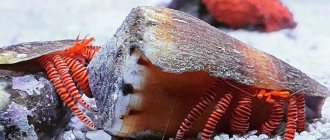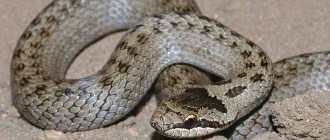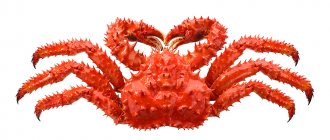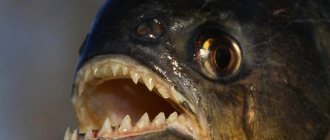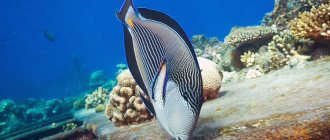In Central and North America, unusual amphibians live, which are called Ambystomata; they are representatives of the caudate order, the Ambystomaceae family.
In English-speaking countries, ambistos are called mole salamanders. These amphibians are endemic to North America: they live from Canada to Mexico and Alaska.
Ambystomas are best known for their larval stage, called the axolotl. About 20 widows are identified as ambistos. The largest representative of the family is the Pacific giant ambistoma. Tiger Ambystoma are widely distributed animals and are often kept as pets in the United States.
Features of the appearance of an ambistom
Adult ambystomas have wide heads with small eyes. The body is stocky and dense with well-defined grooves, the legs are thin, and the tail section is rounded.
The skin is smooth. The eyes have movable eyelids. Many species of ambisto have spectacular colors with spots of different shapes and colors. Ambist bodies can be decorated with bright specks or wide, rich stripes.
Ambystomadae are a family of amphibians, also called mole salamanders, that are endemic to North America.
Axolotl behavior
The Mexican salamander is primarily a nocturnal animal. But, adapting to living conditions, it is active during the day. Her favorite activities are to leisurely swim throughout the entire thickness of the water, feel the walls and soil with her paws, or doze under the leaves of plants. Sometimes they hang right in the water column, in the current of the filter, as if meditating. The long tail plays an important role in maintaining balance and direction of movement. The animal also eats without haste, but with great enthusiasm.
If an axolotl sees live prey, it does not immediately rush after it, but waits for the most opportune moment (usually dusk or night).
Amphibians mostly live peacefully among themselves. But if the aquarium is too cramped or overcrowded, intraspecific aggression is possible.
Ambitious lifestyle
Adults lead a terrestrial lifestyle; they spend most of their time under fallen leaves or in burrows. They can dig holes themselves or occupy other people's homes. Northern species spend the winter in burrows. Ambystomas live alone. Their diet consists of various invertebrates.
Adult ambystomas return to water only during the breeding season, and they choose those reservoirs in which they themselves grew up. The mating season most often occurs in the spring, but some species reproduce in the fall, for example, marbled ambystomas.
All species of Ambisto are oviparous. Several dozen or several hundred eggs are enclosed in separate sacs. Females lay eggs in slow-moving or standing water.
Ambystoma axolotl larvae lead an aquatic lifestyle. In appearance, they resemble adults, but they have 4 pairs of external gills and 4 pairs of gill slits. The gills have scarlet petals because they are made up of capillaries. The eyes of the larvae are not bulging, without eyelids, and fish-like.
Ambisto larvae are called ascolotls; they develop only in water.
The larva grows and undergoes metamorphosis: fins, folds and gills disappear, eyelids appear on the eyes, lungs develop and a typical color appears. But some axolotls grow to adult size without undergoing metamorphosis.
Diseases and their prevention
Like all aquarium inhabitants, diseases of axolotls are associated with violations of living conditions. Most often, the owner of this creature faces the following problems:
- Intestinal obstruction. It occurs when foreign bodies are swallowed. Manifests itself in decreased appetite and complete refusal to eat. Only surgical removal will help.
- Damage to cartilage as a consequence of pathological metabolic processes. Caused by a lack of vitamins and minerals in the body, most often D and calcium. The pet becomes lethargic and apathetic. For advice on normalizing the condition and creating the right diet, it is better to consult a veterinarian.
- Anorexia. Most often it occurs against the background of diseases, infections, parasites, and poor nutrition. Appetite decreases, followed by a refusal to eat, and the body usually becomes very bloated. To treat pathology, a special remedy is used, prepared from egg yolk, calcium gluconate and glycerophosphate, and flower pollen.
- Ascites, which is caused by a violation of metabolic processes in the pet’s body. The cause is often excessive water contamination or poor quality food. Individuals can infect each other, so the sick one should be removed and a veterinarian invited. Diuretics and antibacterial agents are used for therapy.
Pacific giant ambystoma
This species is common in the coastal forests of California and Colombia. These are large amphibians, reaching a length of up to 30 centimeters. Pacific Ambystoms look awkward due to their large size, but they can skillfully climb trees, and actively hunt not only invertebrates, but also their relatives, snakes, frogs and small rodents.
When frightened, the giant Pacific ambystoma makes a loud sound that resembles a bark. Females of this species lay their eggs not in water, but in rodent burrows or cracks in the ground.
Giant Pacific Ambystomas reach 30 cm in length, being quite large amphibians.
Feeding
The axolotl is a nocturnal predator. The basis of its diet when kept in an aquarium should be protein food.
Suitable for these purposes:
- worms;
- cockroaches;
- crickets;
- mussels;
- shrimps;
- crustaceans;
- bloodworm;
- live fish (with caution to prevent contamination);
- dry food for predatory aquarium inhabitants.
Any meat from mammalian species is strictly prohibited. The axolotl's gastrointestinal system is designed in such a way that it is not able to digest such protein.
Under no circumstances should water dragons be overfed, but they should not starve either, they become aggressive.
When feeding the axolotl, you need to get him interested in the food, because if it doesn’t move, he may not notice it. Therefore, the water dragon is often fed by hand or using special tweezers.
In addition, the axolotl's eyes are designed in such a way that they can only look up; they cannot see what lies at the bottom.
With its jaws, this pet is able to grab even a large fish and, holding it, gradually swallows it whole. It will take the dragon several days to digest such prey. Therefore, adult individuals are usually fed to their fullest, but once every 2-3 days.
If you feed an axolotl every day, it will eat without stopping; this species is prone to overeating. But in fact, they are capable of fasting for almost a month.
Olympic Ambystoma
This species lives in North America: from California to Washington. The Olympic Ambystoma is a small reptile, reaching about 10 centimeters in length. This is an agile animal with a slender build.
Olympic Ambystomes live along the banks of streams, hiding from danger between the stones. Since these amphibians live in damp, cool places, their lungs are underdeveloped, breathing is carried out mainly through the skin and mucous membranes of the mouth.
Olympic Ambystomes live near streams and hide under stones from danger.
Compatibility
The best way to keep an axolotl is separately from any other inhabitants. Since these are predatory creatures, they will easily destroy small and peace-loving fish. And predators and large species can destroy the water dragons themselves - their skin and corolla of gills are very fragile and delicate.
In addition, axolotls are nocturnal predators and their lifestyle does not coincide with aquarium fish.
The only exception is, perhaps, goldfish. They are slow and non-aggressive and have the same temperature regime as axolotls. In this case, it is only important to feed all pets well. Other species of fish, frogs, mollusks, and reptiles will not be able to get along with these creatures.
Tiger Ambystoma
These Ambystoma live in North America from Canada to Mexico. The tiger ambystoma reaches 28 centimeters in length, with half of this length being the tail.
Their habitats are coniferous and deciduous forests, fields, meadows, deserts, semi-deserts and even mountains. During the day they hide in rodent burrows and feed at night.
Tiger ambystomas, like most representatives of this family, are nocturnal.
Keeping in an aquarium
The design and equipment of an aquarium for keeping axolotls is a matter of taste, but there are several important points. Young and small axolotls can be kept in 50 liter aquariums.
Adults need a larger volume, 100 liters is the minimum for one or two axolotls. If you are going to keep more than two, then count on 50-80 liters of additional volume for each individual.
A small number of shelters and bright light will have a negative impact on health, since axolotls are nocturnal inhabitants. Anything can be used as shelter: driftwood, large stones, hollow ceramic stones for keeping cichlids, pots, coconuts and other things.
The main thing is that any decor in the aquarium should be free of sharp edges and burrs, as this can lead to wounds on the delicate skin of Mexican salamanders. It is also important that the number of shelters be greater than the number of individuals in the aquarium, they should have a choice.
This will allow them to avoid each other, and you will have a headache, since conflicts lead to severed paws, wounds or even death.
Water filtration is slightly different from what aquarium fish need. Axolotls prefer slow flows and a powerful filter that creates a flow of water will cause stress.
Naturally, water purity is important, so you need to choose a middle ground between power and efficiency. The best choice would be an internal filter with a sponge, as it is quite powerful, but does not create such a strong current, and it costs relatively little.
Water changes follow the same principle as for fish, partial weekly changes. Only in the case of axolotls, you need to monitor the water parameters even more carefully, since they are larger, eat protein foods and are sensitive to cleanliness in the aquarium.
It is important not to overfeed and remove any remaining food.
Axolotls have virtually no bones, especially young ones. Most of their skeleton consists of cartilage tissue, and their skin is thin and delicate. So unless absolutely necessary, touching them is not recommended.
If you need to catch this salamander, use a net made of thick, soft fabric, with small cells, or a glass or plastic container.
Mole-shaped ambistoma
The mole-tailed ambystoma is found along the South Atlantic coast, from Louisiana and North Carolina to Oklahoma, Northern Illinois, Texas and Arkansas.
Young larvae retain the ability to regenerate and can restore lost limbs.
The body length of the mole-shaped ambystoma is 8.5-9.5 centimeters. Representatives of this species are notable for the fact that, in addition to the breeding season, they constantly dig in the ground, which is why the species got its name. Females lay eggs in temporary ponds formed in the pine forest.
Axolotl nutrition
Mexican newts are predators, so the basis of their diet is protein food. Feeding should be regular, but in small portions. The rules for using live food are also relevant for axolotls: after the animals have eaten, the remaining food must be removed. Uneaten food quickly becomes poison, poisoning the water (the content of nitrogen compounds, those same nitrates and nitrites, increases).
Foods that are suitable for Neotenia Ambystoma:
- Sinking food for predatory fish - granules or tablets;
- Mussels, shrimp;
- Bloodworm;
- Pollock fillet.
You can feed both fresh and frozen food. A good addition-delicacy would be live small fish.
Some species of predatory fish are given beef heart. Mammalian protein is contraindicated due to the peculiarities of the digestive system. Only pieces of underwater inhabitants!
Ambystoma Taylor
This species is endemic to the crater lake Laguna Alchichika, which is located high in the mountains and is located in the Mexican state of Veracruz - this is an extremely salty lake, the water temperature in which is 18-21 degrees. The body length of Taylor's ambystoma is 15-20 centimeters.
Ambistoma populations and species were originally found in the mountainous regions of the United States and the Central Plateau of Mexico.
Enemies
The eggs of marbled ambistos are eaten by beetles, salamanders, frogs and possibly centipedes. The larvae are preyed upon by arthropods (dragonflies, spiders, beetles and their larvae), adult green newts and birds (such as kingfishers). Juveniles and adults are preyed upon by snakes (striated nerhodia, western garter snake), raccoons, birds (ducks and owls), opossums (Virginia possum), skunks, shrews, and weasels. When eating adult marbled ambistomos, predators do not touch the tail, because it contains glands that produce poison.
Related article Toxicity of newts and salamanders
Silver Ambystoma
This ambistoma is widespread in the USA: Massachusetts, Ohio, New Jersey and Michigan.
During the process of metamorphosis, the gills and fin folds disappear, the animal molts, and the skin begins to acquire the color typical of adults.
The silvery ambistoma lives in deciduous forests, where it lives in ponds and small rivers. These are medium-sized amphibians with a body length of 12-20 centimeters.
Long-toed Ambystoma
The long-toed ambystoma lives from Northern California to Alaska, from Western Montana to Idaho. Does not rise to a height of more than 2800 meters. It lives in coniferous and temperate tropical forests, and is also found on plains and alpine meadows. This is a rather small ambistoma, reaching a length of 4.1-8.9 centimeters.
Long-fingered ambystoma prefers coniferous forests and alpine meadows.
Marble Ambystoma
This species lives in North America: from the Great Lakes to Florida. Marbled Ambystoms are found in a variety of habitats: mixed, deciduous forests, coastal plains, foothills, tall grass prairies, forest floodplains and on mountain slopes at an altitude of no more than 700 m. They are more tolerant of dry habitats compared to other species.
Marble ambystomas reach 9-12 centimeters in length. Most of their lives they hide under stones, logs, fallen leaves, in burrows and hollows. During the dry season, individuals of this species burrow deep into the ground, where they wait out unfavorable times.
The marbled ambistoma reproduces not in water, but on land. Reproduction occurs once a year. The female lays her eggs at the bottom of a dry ditch or pond and guards them until the pond is filled with water.
Marbled Ambystoma (Ambystoma opacum).
If this does not happen, then the development of the larvae stops until spring, and throughout this time the female takes care of the clutch, turning over the eggs and protecting them.
Mr. Tail recommends: description and natural habitat
Axoloti is essentially an intermediate stage of development of some species of ambistoma, most often Ambystoma mexicanum. This larva - neoteny - is capable of reaching sexual maturity in this state without moving to the next stage of development, never turning into an adult form.
The literal translation of the word “axolotl” is “water dog”, which is an analogue of “monster”, “dragon”. This is what the Aztecs called this oldest creature on Earth. There are also such versions of translation from the Nautal language as “God of destruction and death”, “Playing in the water”.
The ambystous axolotl is prevented from undergoing metamorphosis and moving from an aquatic larval form to an amphibian tailed one due to a lack of the hormone thyroxine.
In principle, by creating appropriate environmental parameters or introducing special substances into the axolotl’s body, such a metamorphosis is possible. But it is better not to start this experiment at home, so as not to destroy a unique creature.
Ambystoma mexicanum or Mexican Ambystoma is an endemic North American species of mole salamander.
Axolotls first became laboratory specimens for biologists before becoming aquarium creatures in the early 19th century.
In nature, axolotls still live in Mexico's lakes Xochimilco and Chalco, calm reservoirs of some American states, for example, in southern California, Florida, and others up to the Great Lakes.
Their favorite place is fairly cold water bodies, where they prefer to spend time at the bottom in thickets of algae.
The appearance of a water dragon is not at all intimidating. The flexible narrow tailed body reaches a length of 35-45 cm, on the sides of the flat head with small eyes there is a corolla of three pairs of gills. This creature can breathe them underwater, and its lungs allow it to remain calmly on the surface, inhaling atmospheric air.
If an axolotl is out of water for a long time, the gills atrophy; when they return to the aquatic environment, they regenerate.
The mouth is so large that it seems that the axolotl is always smiling, apparently this is what gives it such a good-natured and peaceful appearance. There is a leathery ridge along the back, further enhancing the resemblance to a dragon.
Axolotl photo gallery:
With the help of a well-developed tail, they easily move under water, and their paws end with fingers, which are convenient for clinging to the ground at the bottom of the reservoir. Although these creatures do not like to move quickly and lead a rather sedentary lifestyle.
These are definitely predators, like any amphibian larvae, capable of reproducing and living up to 12-15 years.
